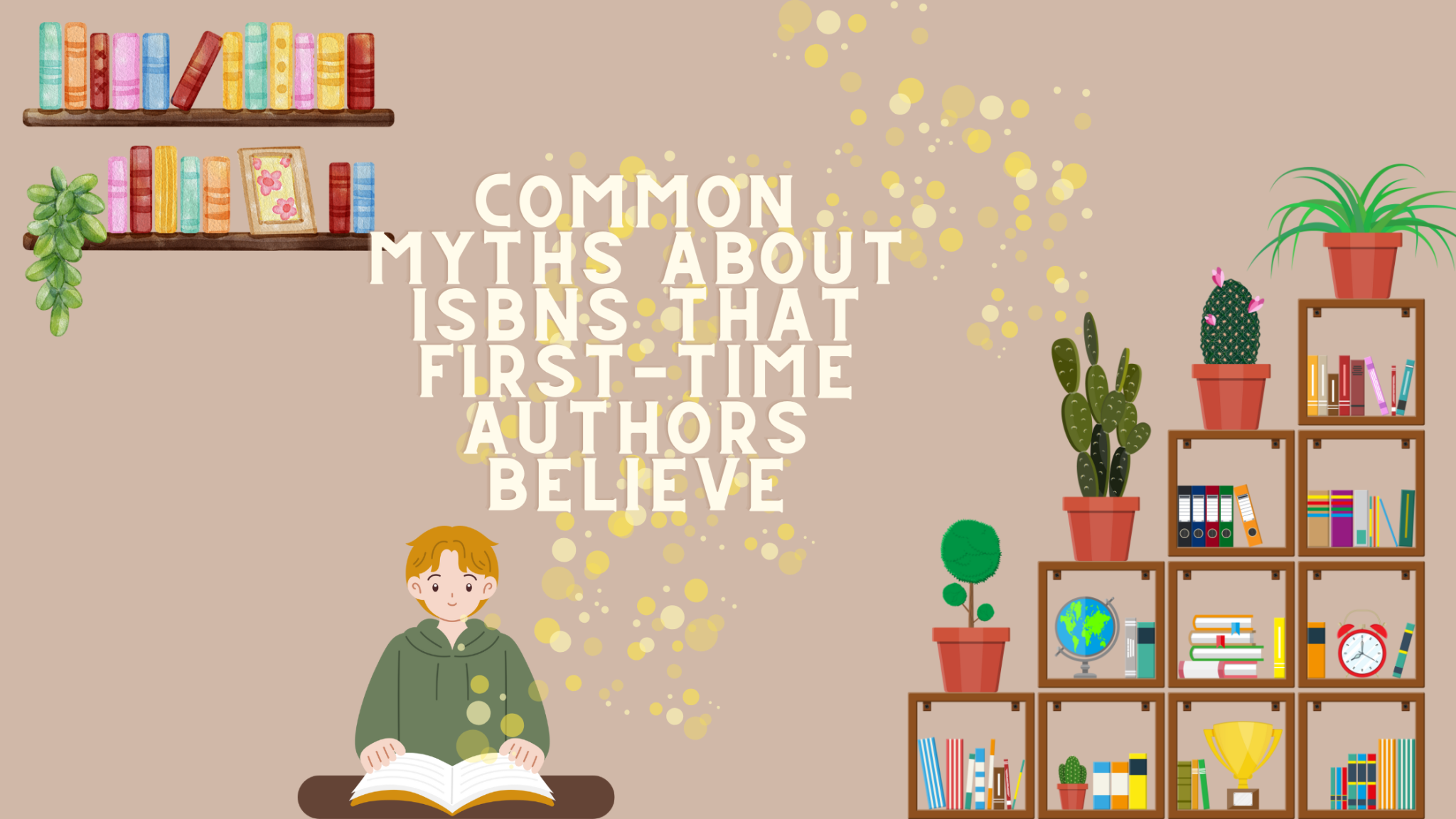
Entering the world of publishing for the first time is an exhilarating journey, filled with creative passion and newfound responsibilities. Amidst the excitement of writing and editing, many first-time authors encounter a seemingly complex, yet crucial, component of the publishing process: the International Standard Book Number, or ISBN.
Unfortunately, a lot of misinformation circulates about ISBNs, leading to confusion, unnecessary expenses, and missed opportunities. Let’s debunk the most common ISBN myths and provide ISBN facts to guide you toward correct practices, especially for self-publishing.

This is arguably the most widespread misconception. Many authors assume a single ISBN covers their title no matter how it’s produced.
The Reality: An ISBN is a product identifier, not just a title identifier. A unique ISBN is required for each distinct format and edition of your book. This means if you publish your book as:
Each of these will need its own separate ISBN. Even a simple reprinting of the same book with no changes can keep the same ISBN, but if you make significant updates, like adding a new chapter, changing the title, or revising the content, you’ll need a new ISBN for that new edition.
Best Practice: Before you buy, consider all the formats you plan to release. If you intend to sell both a paperback and an ebook, you’ll need at least two ISBNs. This is why many authors, particularly in the U.S., find it more cost-effective to buy a block of 10 ISBNs from their country’s official ISBN agency.
This myth is particularly relevant for those who are self-publishing on platforms like Amazon’s Kindle Direct Publishing (KDP).
The Reality: For print books (paperback and hardcover), yes, an ISBN is generally required by most major retailers, and KDP will either assign you a free one or allow you to use your own. However, for ebooks, an ISBN is often optional.Amazon, for instance, uses its own internal identifier, the ASIN (Amazon Standard Identification Number), for Kindle ebooks. Many authors who only plan to sell an ebook exclusively on Amazon don’t purchase an ISBN at all.
Best Practice: If you plan to “go wide” and distribute your ebook to multiple retailers (like Apple Books, Barnes & Noble, Kobo, etc.) or through an aggregator like Draft2Digital, an ISBN becomes more important for consistent tracking across platforms. But if your plan is to stay exclusively on Amazon, you may not need one for the digital version.
Many print-on-demand services offer a free ISBN to their authors. This seems like a great deal, but it comes with a significant catch.
The Reality: A free ISBN assigned by a service like KDP or IngramSpark lists that company as the publisher of record.Your name is on the author line, but the publisher field in book databases will show “Independently Published” (for KDP) or the name of the service. This can have long-term consequences. If you ever want to switch distributors or publishing services, you’ll have to get a new ISBN, which could mean losing reviews and sales history tied to the original ISBN.
Best Practice: For serious self-publishing authors, it is highly recommended to purchase your own ISBNs from your country’s official ISBN agency. In the U.S., this is ISBN Service. Owning your ISBN ensures you are listed as the publisher of record, giving you full control and portability over your book’s metadata and distribution, and establishing your own publishing imprint.
This is a common and dangerous myth that can leave authors with a false sense of security.
The Reality: An ISBN is simply a product identifier for the book trade. It does not provide any legal or copyright protection. Copyright is granted the moment you create your work in a fixed, tangible form. While you can register your copyright with your country’s copyright office for an additional layer of legal protection, the ISBN has no role in this process.
Best Practice: Focus on understanding the basics of copyright law in your country. If you’re concerned about intellectual property, register your copyright separately. The ISBN is about commercial distribution, not legal ownership.
While some services may bundle them, the ISBN itself is not the barcode you see on the back of a physical book.
The Reality: The barcode on a book’s back cover is a scannable representation of the ISBN. Many ISBN providers, like ISBN Service, offer a barcode generator as a separate service or as part of a package. However, you don’t need to pay for it. There are numerous free online barcode generators where you can simply enter your ISBN to create a high-resolution image to place on your book’s cover.
Best Practice: Save your money. Once you have your ISBN, use a free online tool to generate your barcode. Just make sure the final image is high-quality and correctly formatted for print.
By understanding these ISBN facts and steering clear of the common ISBN myths, you can make informed decisions for your book. An ISBN is a powerful tool for a self-publishing author, it connects your book to the global supply chain, but it’s crucial to understand how to use it correctly to maintain control and maximize your book’s reach.
A: Not necessarily. If you plan to sell your ebook exclusively on platforms like Amazon Kindle Direct Publishing (KDP), an ISBN is not required. Amazon uses its own identifier, the ASIN (Amazon Standard Identification Number). However, if you want to sell your ebook on multiple platforms (e.g., Apple Books, Barnes & Noble, Kobo) or through an aggregator, an ISBN is highly recommended for consistent tracking.
A: You must purchase an ISBN from the official, authorized agency for your country. For authors in the United States, that’s ISBN Service. For other countries, a quick search for “official ISBN agency [your country]” will provide the correct source. Be cautious of third-party vendors selling ISBNs at inflated prices; always go to the official source.
A: A single ISBN can be quite expensive. However, buying a block of 10 or more is often significantly more cost-effective per unit. Consider your future plans. If you anticipate publishing multiple books or different formats (paperback, hardcover, ebook) of your current book, buying a block of 10 is the most practical and economical choice for a self-publishing author.
A: The ISBN is a 13-digit number that identifies your book. The barcode is the scannable image on the back of a physical book. A barcode is a visual representation of your book’s ISBN and price. You can generate a barcode for free online using your ISBN once you have it.
A: No, you cannot simply swap them. The free ISBN provided by a publishing service lists that service as the publisher of record. If you later decide to use your own ISBN (which lists you as the publisher), you’ll need to publish a new edition of the book. This means the new version will have a separate product page, and you may lose accumulated reviews and sales history from the previous edition. This is a key reason why many authors choose to purchase their own ISBNs from the start.
